Konstantin Chaykin Unveils the Extraordinary Lucomorye Clock
A thematically aesthetic marvel with a complex hour display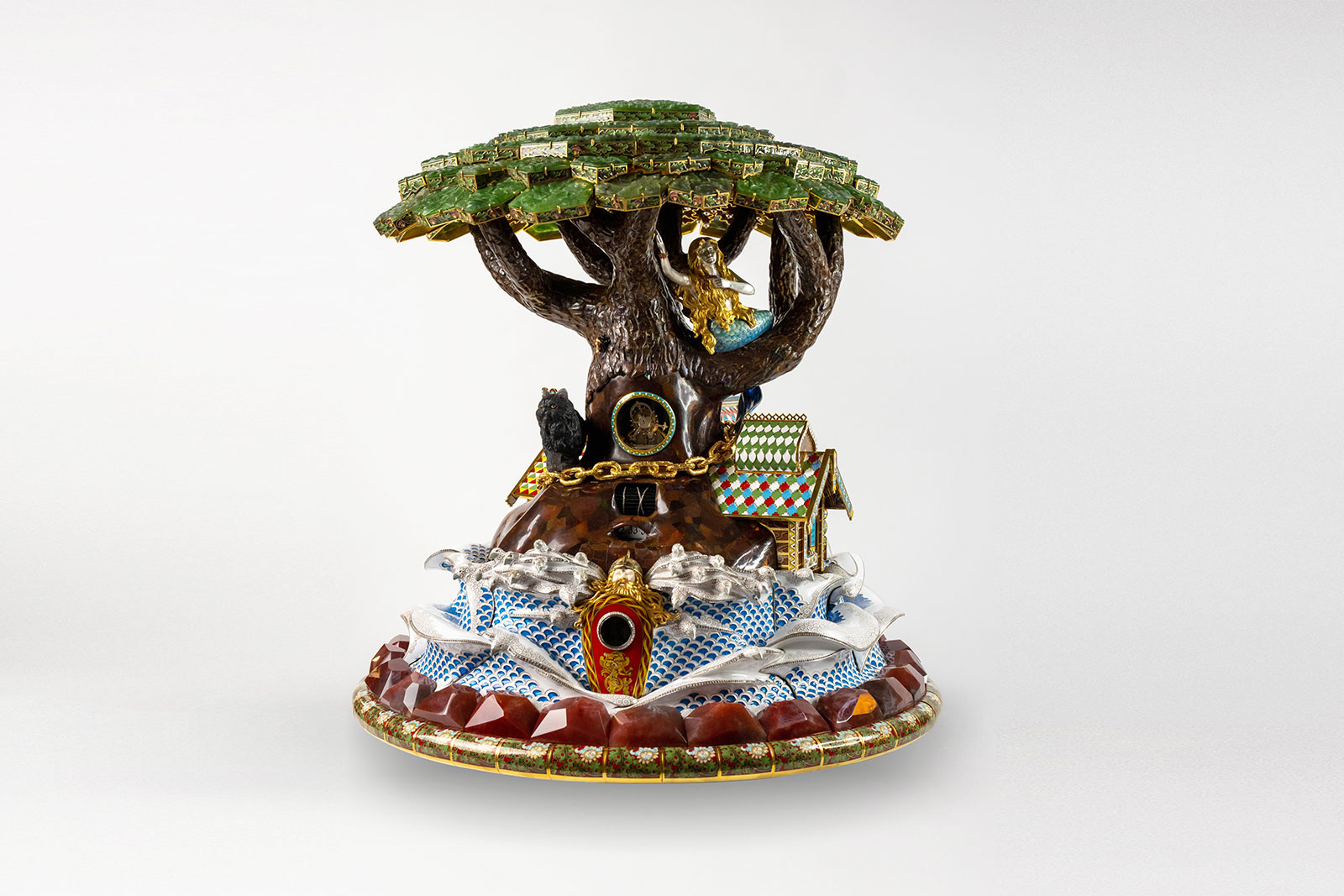
While better known for his ingenious and quirky wristwatches, Konstantin Chaykin’s roots are in clockmaking, large, complicated, and ornate clocks to be exact. Six years in the making, his latest timekeeper is the Lucomorye Clock, a testament to the Russian watchmaker’s aesthetic vision and mechanic prowess.
Lavishly decorated with gemstones and precious materials by renowned Russian jeweller, Ilgiz Fazulzyanov, the Lucomorye Clock has a fairytale exterior. But perhaps more significant are the fascinating mechanics centred on a remarkable way of displaying the hours – a chain wraps around a drum to display to form of Roman numerals that change with the time. The simplicity of the chain belies the mechanical complexity within, which is naturally patented.
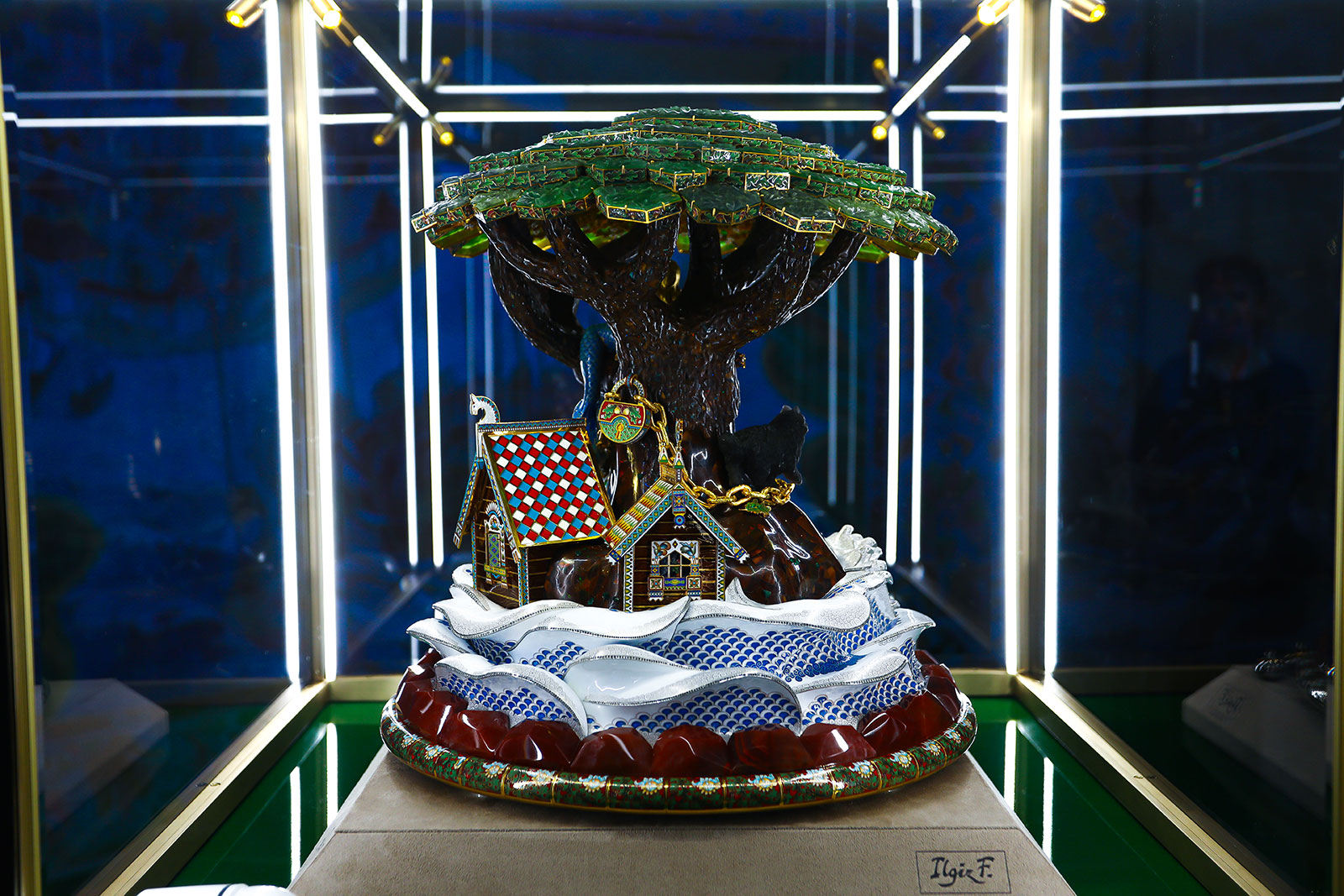
Initial Thoughts
Mr Chaykin’s rise to fame internationally started with the Joker, a whimsical wristwatch with an amusing “rolling eye” display. But though the Joker and its successors remain Mr Chaykin’s bestsellers, they are not the best representation of his creative and mechanical genius.
His talents are illustrated best with clocks, which have no limitations in terms of size, allowing for intricate complications impossible on a small scale. Amongst his most notable clocks is the series of Easter-themed clocks that he released annually starting in 2005, each with a complication to indicate the date of Orthodox Easter – an unconventional and rare complication due to the complexity of calculations required to achieve the display.
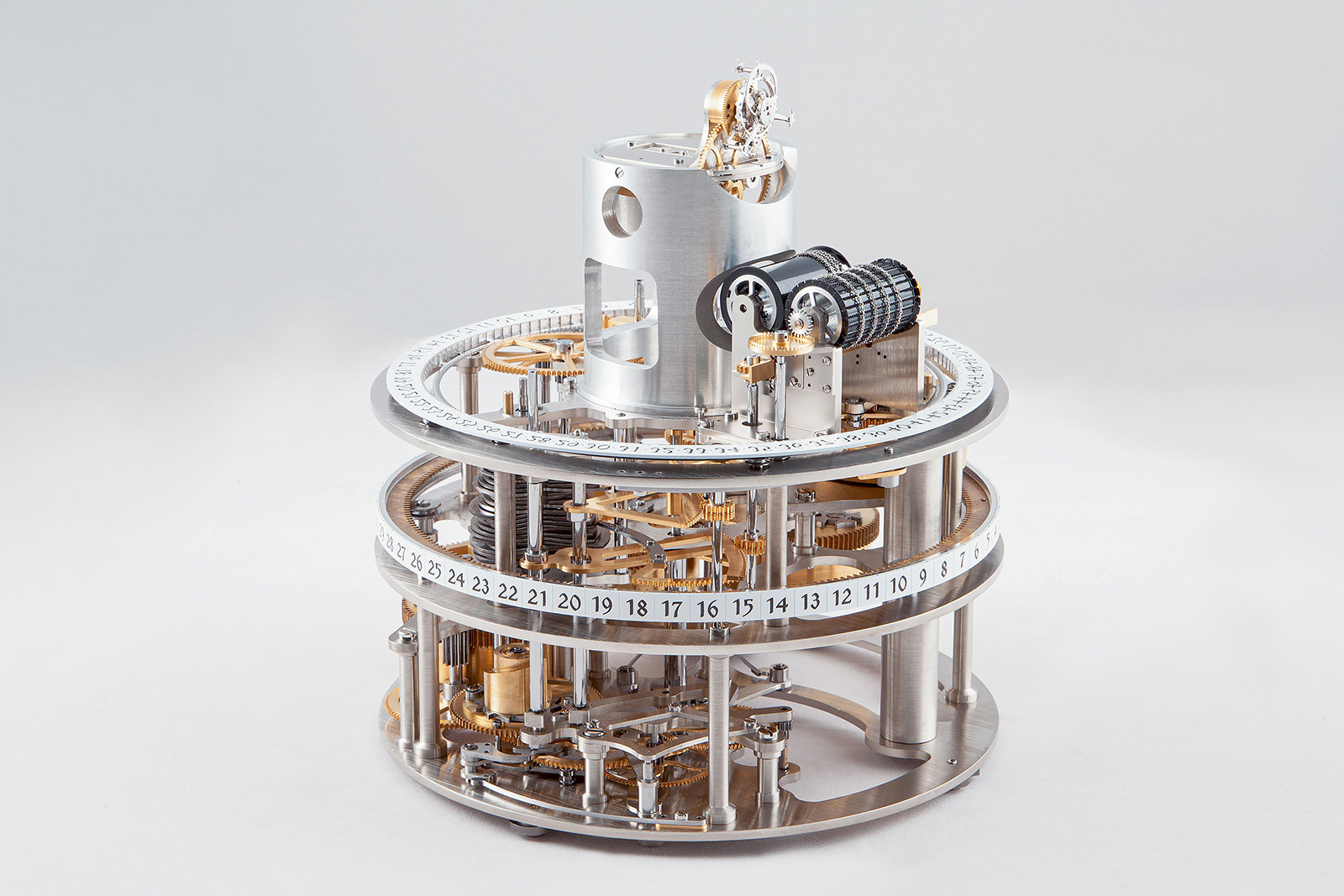
The complicated Cal TLU.04-0 inside the elaborately adorned exterior of the Lucomorye
The Lucomorye is one such mechanical marvel – a complex movement with most of its constituent parts dedicated just to the chain-and-drum hour display. This is complemented by the ornate exterior made of precious stones, gold, and other expensive materials, all delicately crafted by Mr Fazulzyanov.
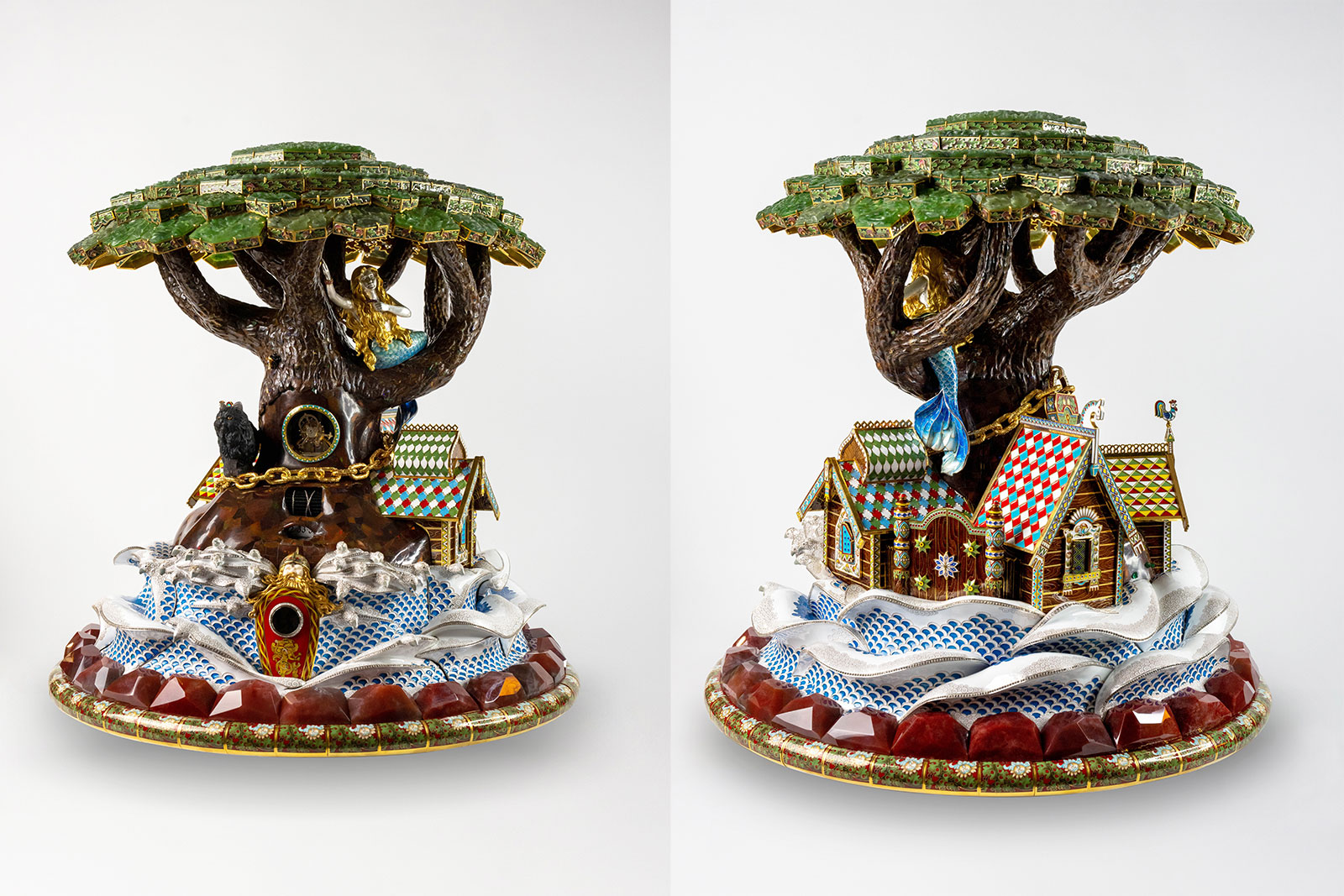
The motivation
The genesis of the Lucomorye was the novel mechanism to display the hours, which Mr Chaykin first devised in 2016. It’s essentially a chain that progressively wraps around a rolling drum, but because of a horizontal sliding carriage that shifts the coil of the chain, it wraps at different angles as time passes.
By carefully controlling the motion of the sliding carriage, the chain can be used to depict Roman numerals from “I” to “XII” in order to indicate the hours. This is made possible as all the Roman numerals from one to 12 are comprised entirely of straight lines.
Unfortunately, the mechanism was too unwieldy for a wristwatch, due to the energy it requires and space it occupies. Thus, the natural solution was a table clock.
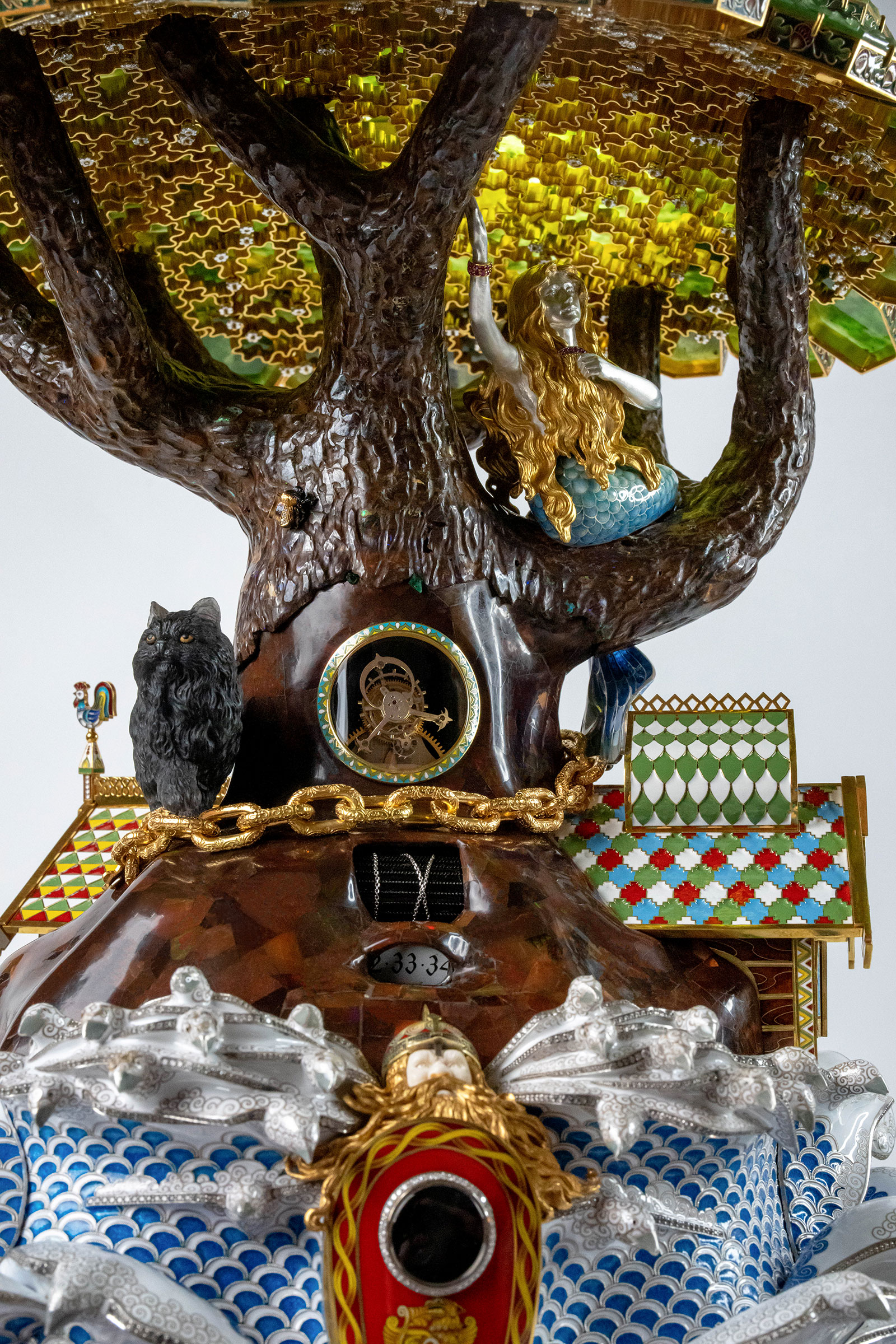
The concept of winding a chain around a shaft in turn inspired the theme of the clock, which depicts scenes from Alexander Pushkin’s poem Ruslan and Lyudmila. The opening lines of the poem read: “By the sea stands a green oak tree; A golden chain strung round it…”. Coincindentally, the launch of the Lucomorye Clock is taking place on the 200th anniversary of the publication of the poem.
To realise his aesthetic vision, Mr Chaykin approached a fellow Russian artisan, jeweller Ilgiz Fazulzyanov. The idea was to create a thematic composition inspired by Lucomorye, the mythical region oft mentioned in Russian folklore and also the setting for Pushkin’s poem. Various characters from the poem are incorporated on the exterior of the clock, which has an oak tree at its centre.
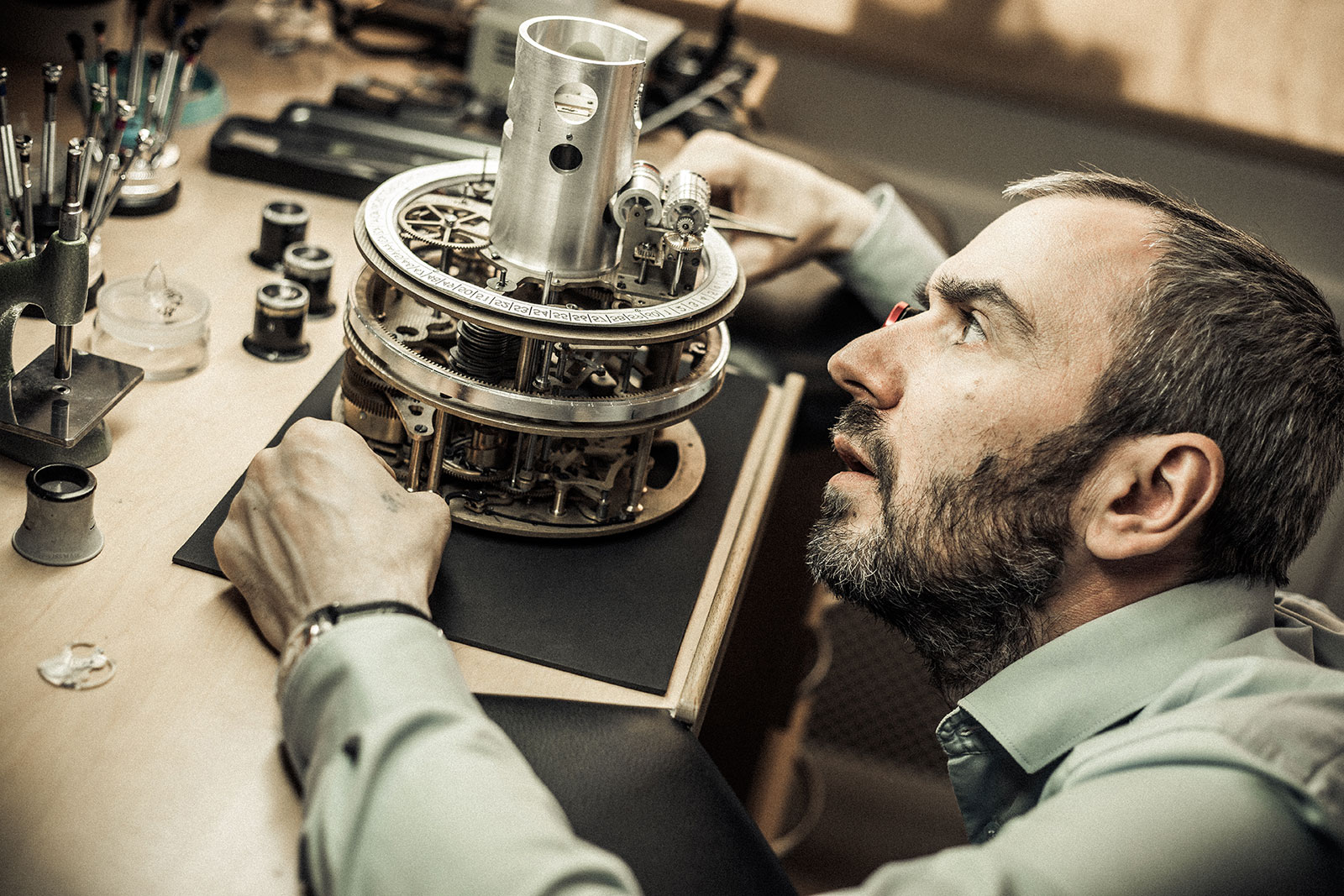
Mr Chaykin assembling the movement of the Lucomorye Clock
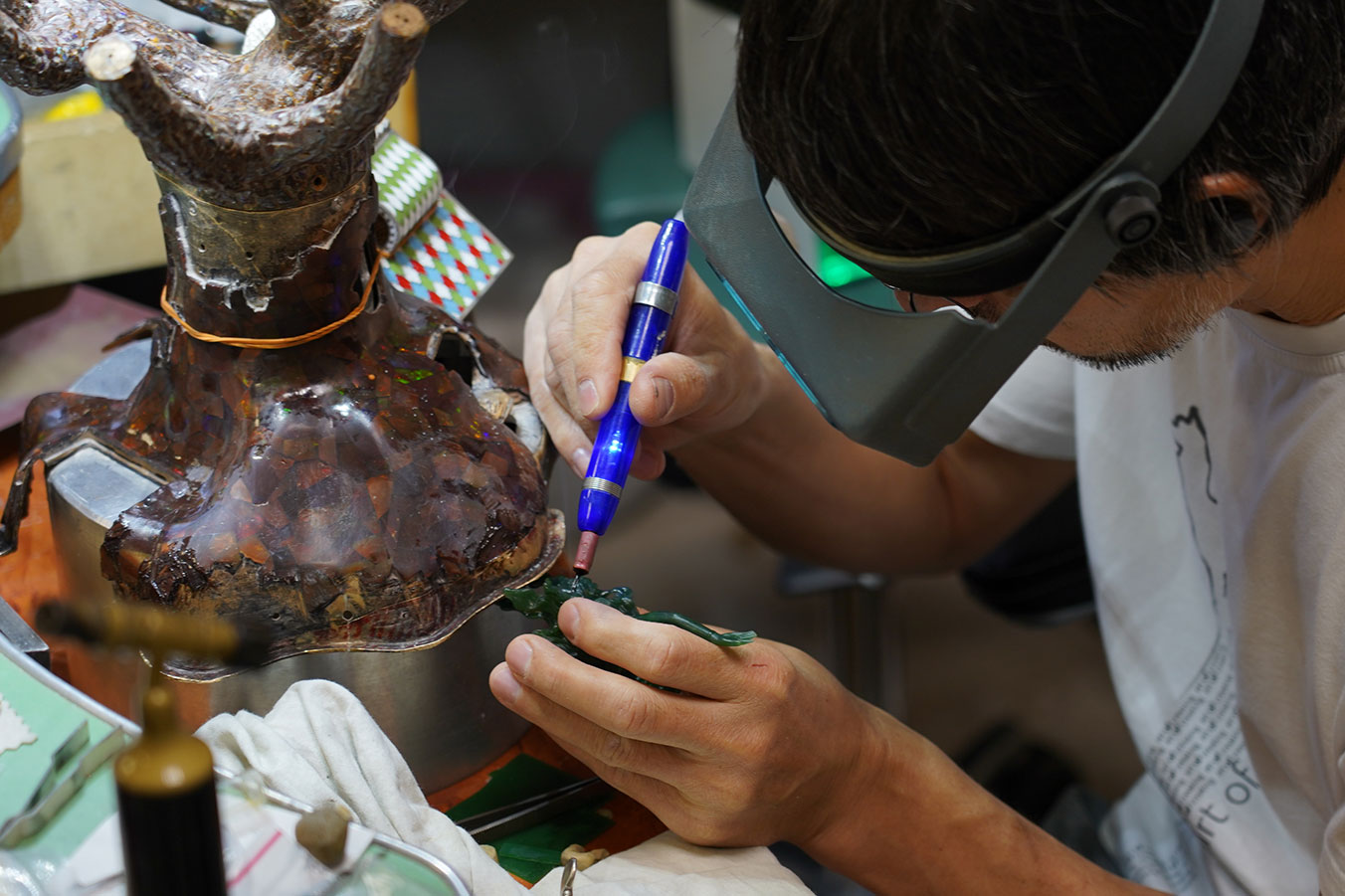
Mr Fazulzyanov at work, carving the jade figure of the mermaid
Mr Fazulzyanov used a variety of gemstones for the ornamentation, including both Australian boulder opals and Ethiopian fiery opals for the tree trunk, while the oak leaves actually jade plates engraved with a leaf motif and then finished with cloisonné enamel on their edges.
The result is breathtaking, with the pictures of the clock speaking for themselves.
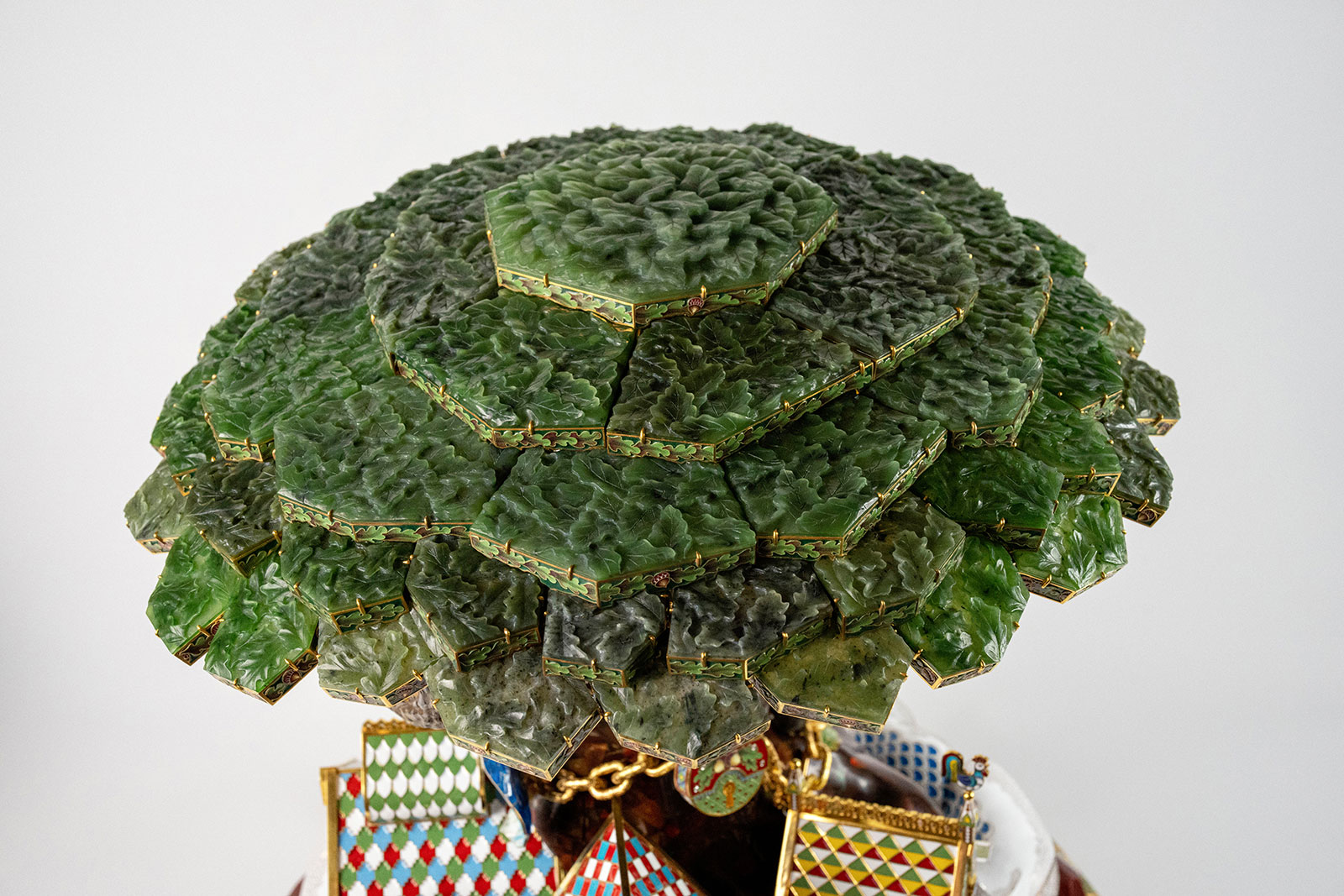
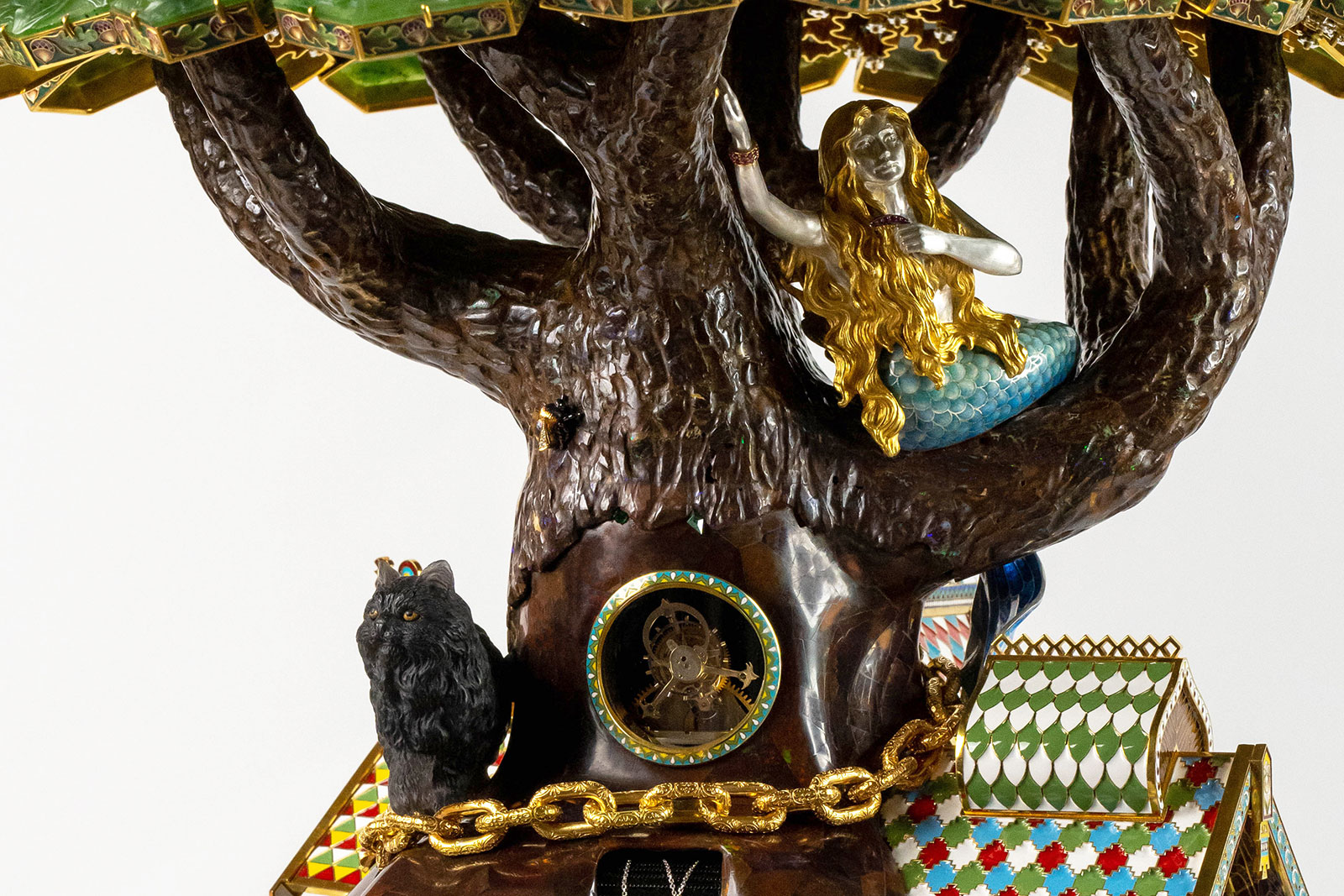
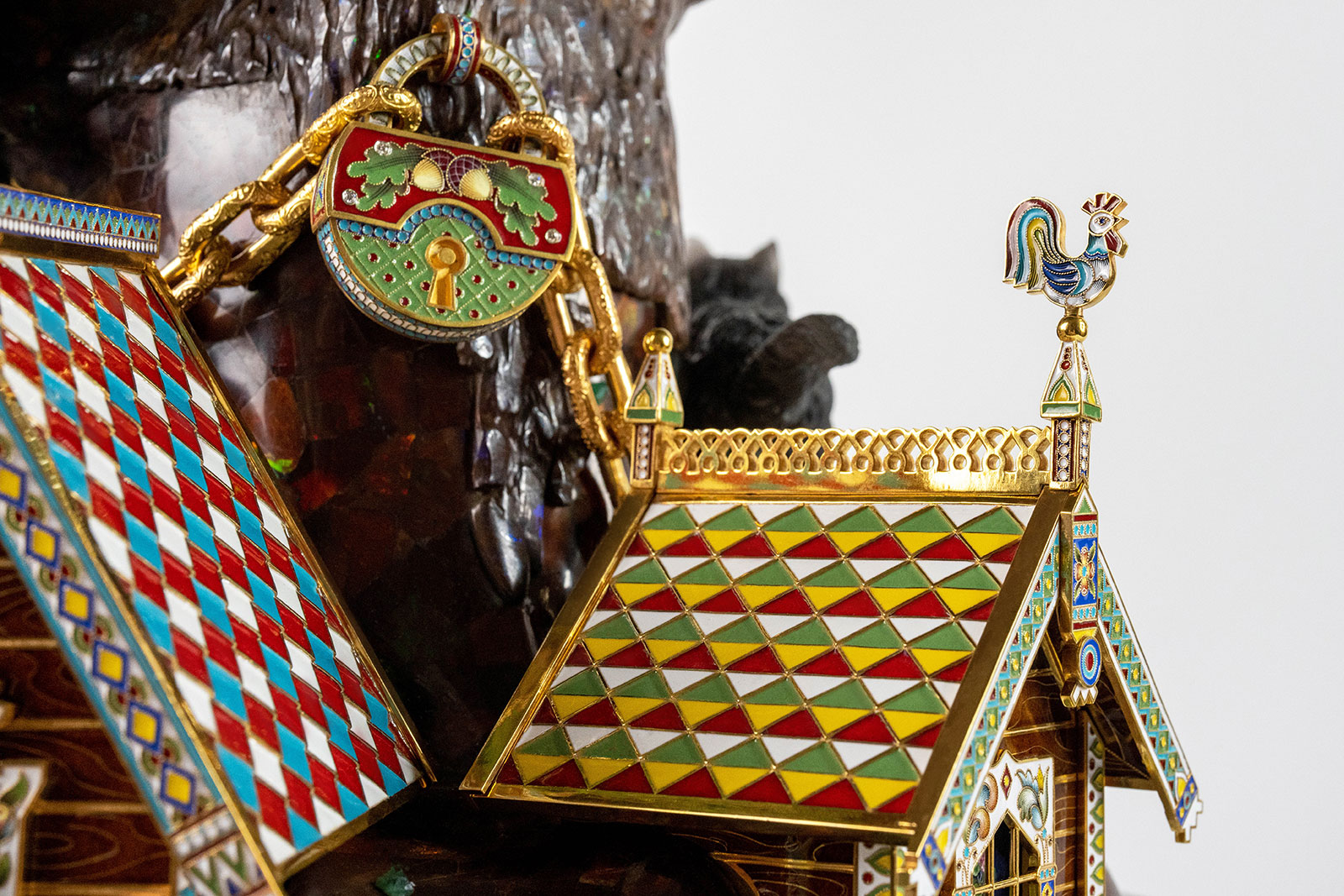
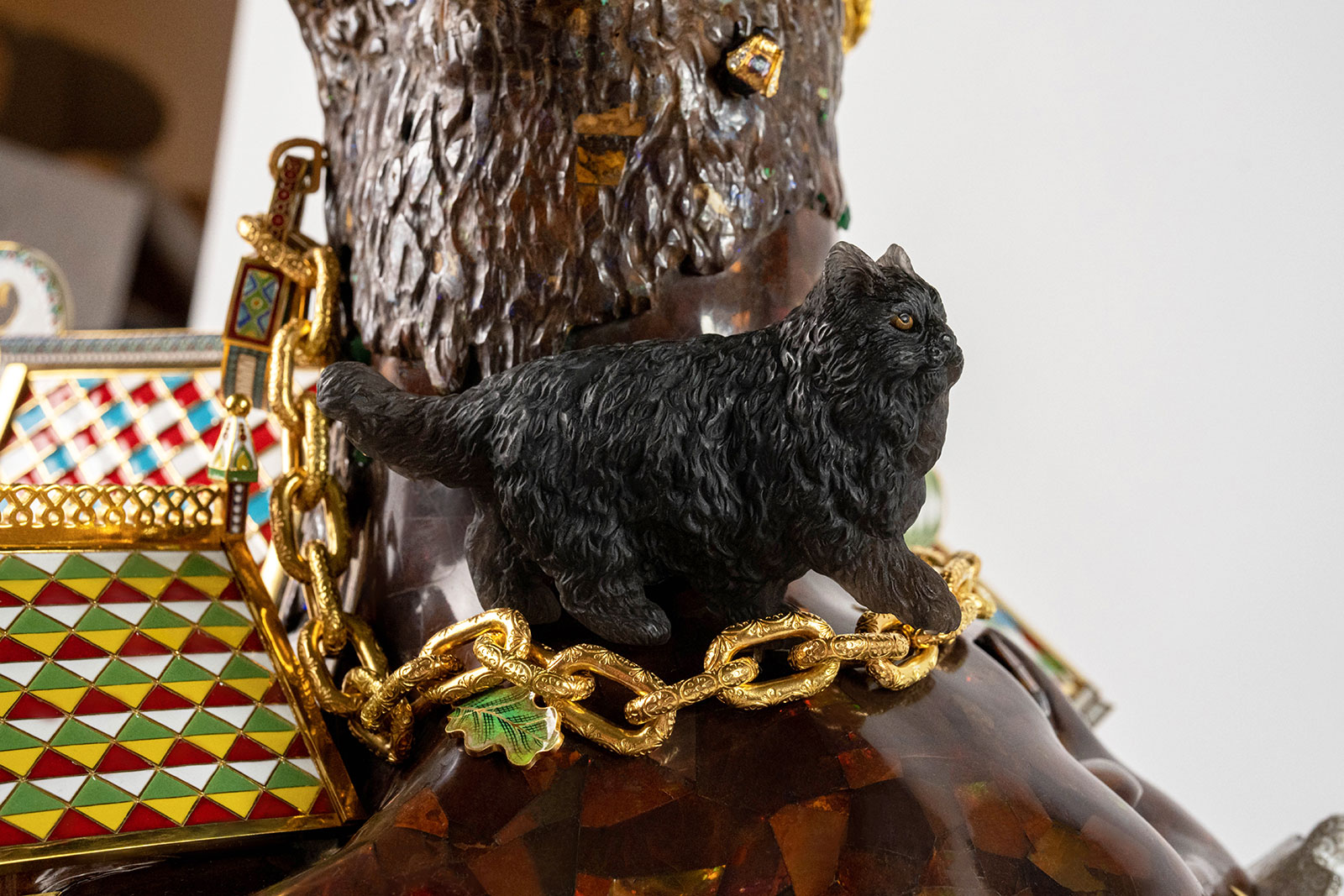
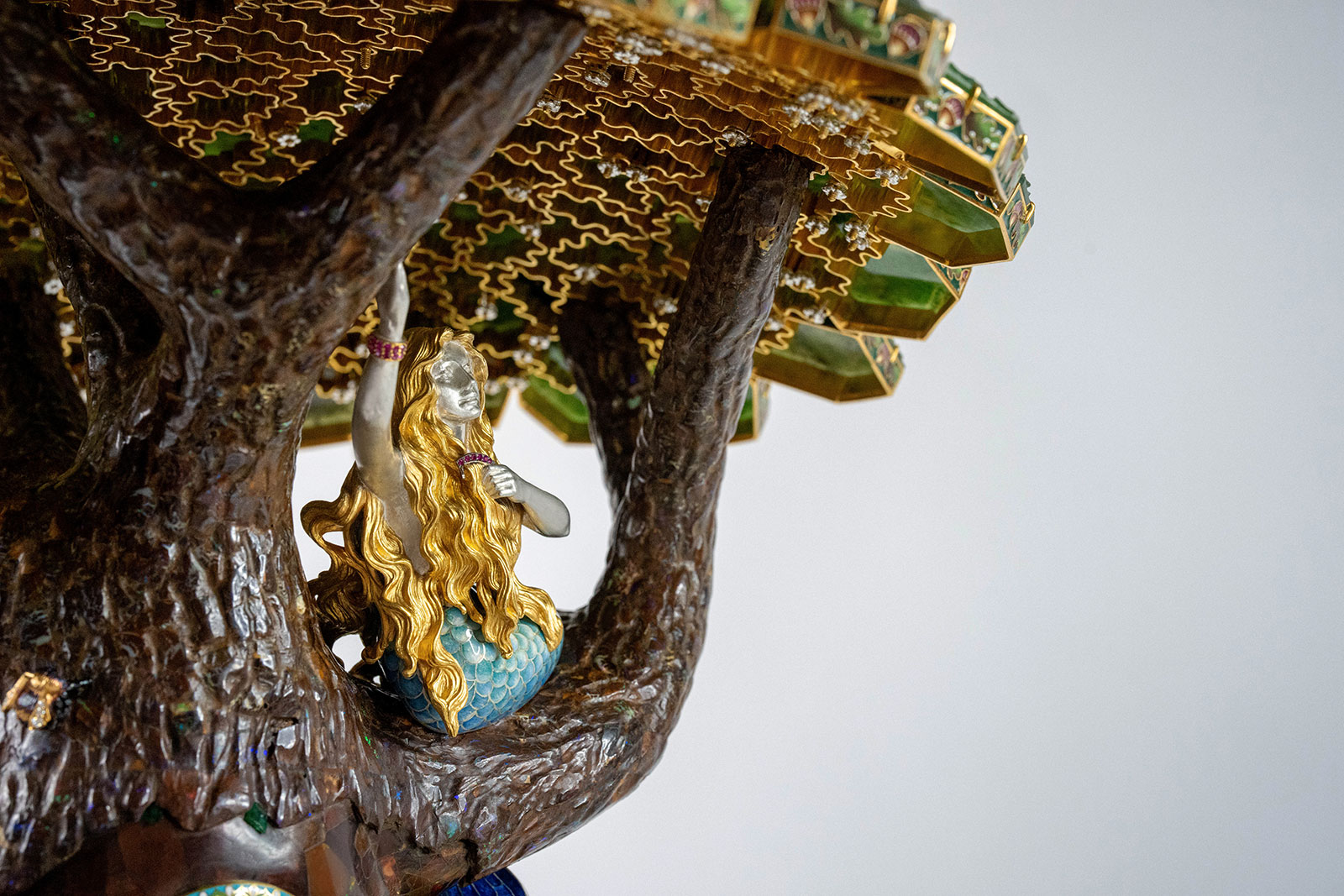
A mechanical computer
While the exterior of the clock is an incredible fairytale landscape, the star of the show from a horological standpoint is the cal. TLU.04-0 within. In essence, the clock only indicates the hours and minutes, with the seconds shown via a one-minute tourbillon, along with the additional complications of a simple date and power reserve.
However, the movement comprises a whopping 1,119 parts, with the entire chain for the hours counted only as one component (counting the individual links of the chain would have more than doubled the part count). Many of those components are part of the hour display mechanism, which might seem initially surprising given the simplicity of a conventional hour display. But that quickly becomes understandable if the hour display is thought of as an automaton, requiring myriad of cams and levers to function.
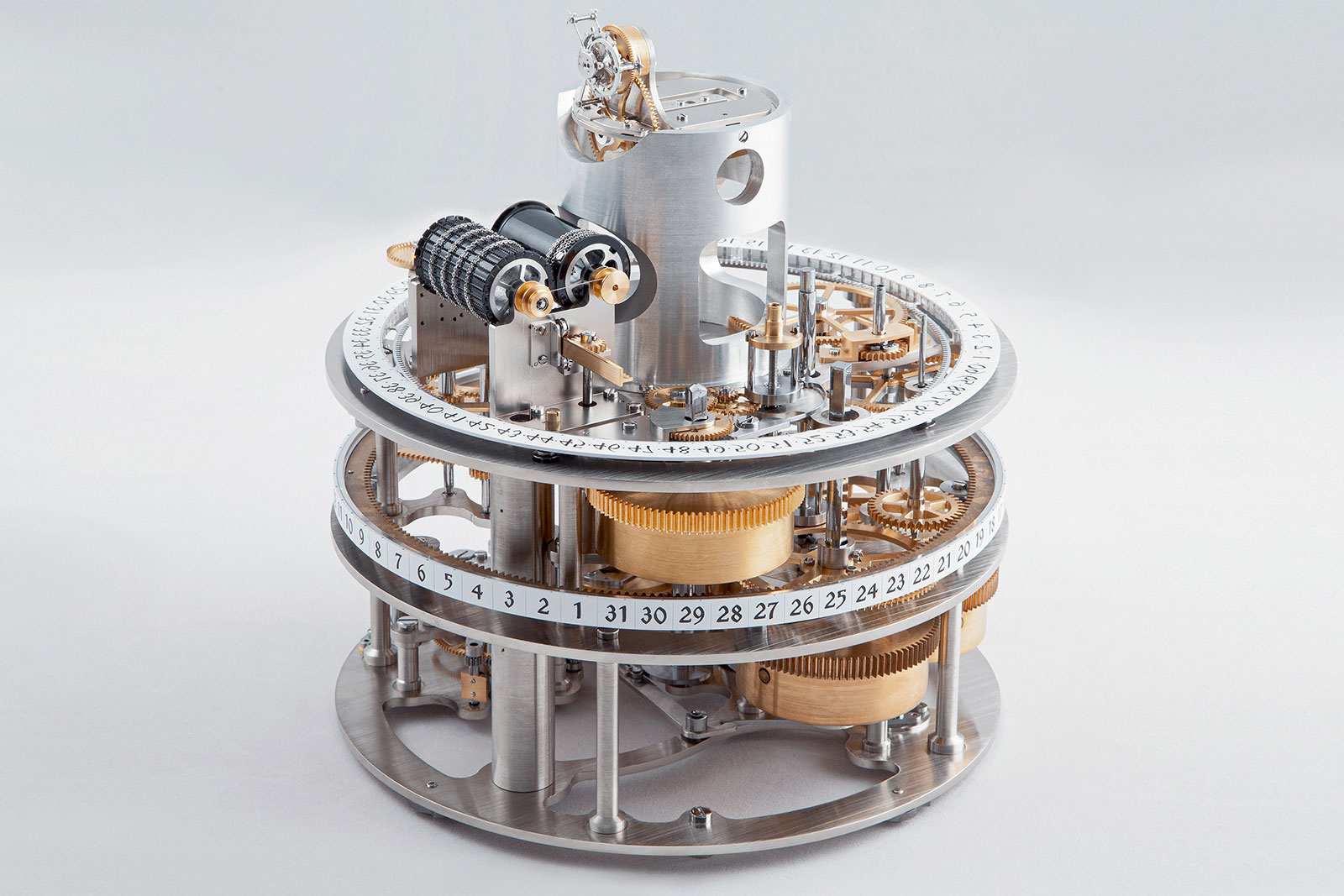
Mr Chaykin patented the hour display mechanism with patent RU2619032 filed in March 2016. While the patent describes the general method of displaying the hours, the specific mechanical implementation is open to interpretation, with Mr Chaykin’s execution of the idea inside the Lucomorye clock illustrating the immense complexity of the mechanism.
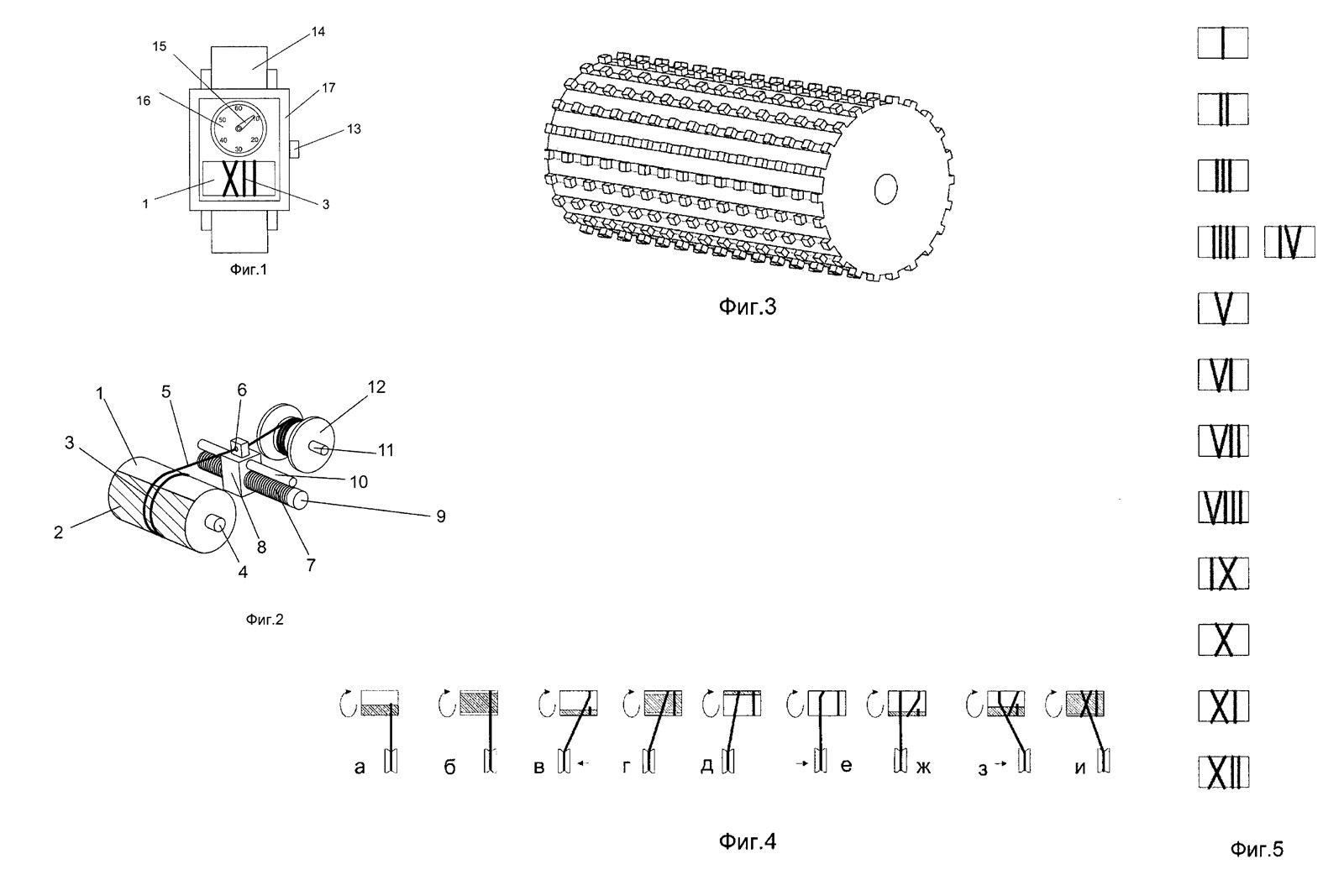
Excerpts from Patent RU2619032. Fig. 1 demonstrates a hypothetical wristwatch with the display, Fig. 2 illustrates the carriage mechanism to control the chain, Fig. 3 is an example of a studded drum to hold the chain in place, Fig. 4 showcases the sequence to display the “XI” as an example, and Fig. 5 shows all possible display of the Roman numerals from one to 12.
The hour display consists of a studded drum that holds the chain in place. As the drum rotates, the chain sequentially displays the Roman numerals from one to 12. Each time the hour changes, a sequence of events occur, making the hour display akin to an automata.
First, the chain unwinds entirely from around the drum, resetting the hour display. Then, the drum slowly rewinds the chain in a controlled manner, with the horizontal sliding carriage directing the chain to create vertical or diagonal lines across the drum, allowing it to display any of the Roman numerals from “I” to “XII”.
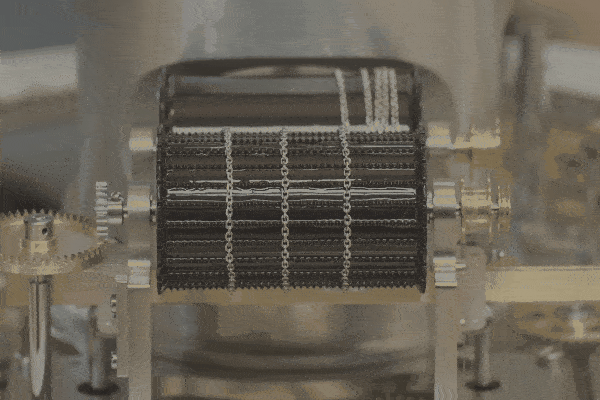
An animation of the hour display switching from “III” to “IIII”
The reason for the complexity of the mechanism is the precise synchronisation required of the carriage and drums to create each hour numeral. For instance, the horizontal sliding carriage has to slide back and forth to form the numerals “V” or “X”, but the drum has to perform a different number of revolutions for each numeral.
As a result, every one of the 12 hours has its own pair of cams that control the horizontal motion of the sliding carriage and the rotation of the drum. This means the movement has a total of 24 cams to encode all the mechanical information needed to display the hours. The 24 cams are stacked together to create a single tower that rises one level after every hour in order for the racks to “read” the outline of the cam. This is reminiscent of the mechanisms found in complex mechanical automata such as the 18th dolls built by Pierre Jaquet-Droz that could write a fixed text.
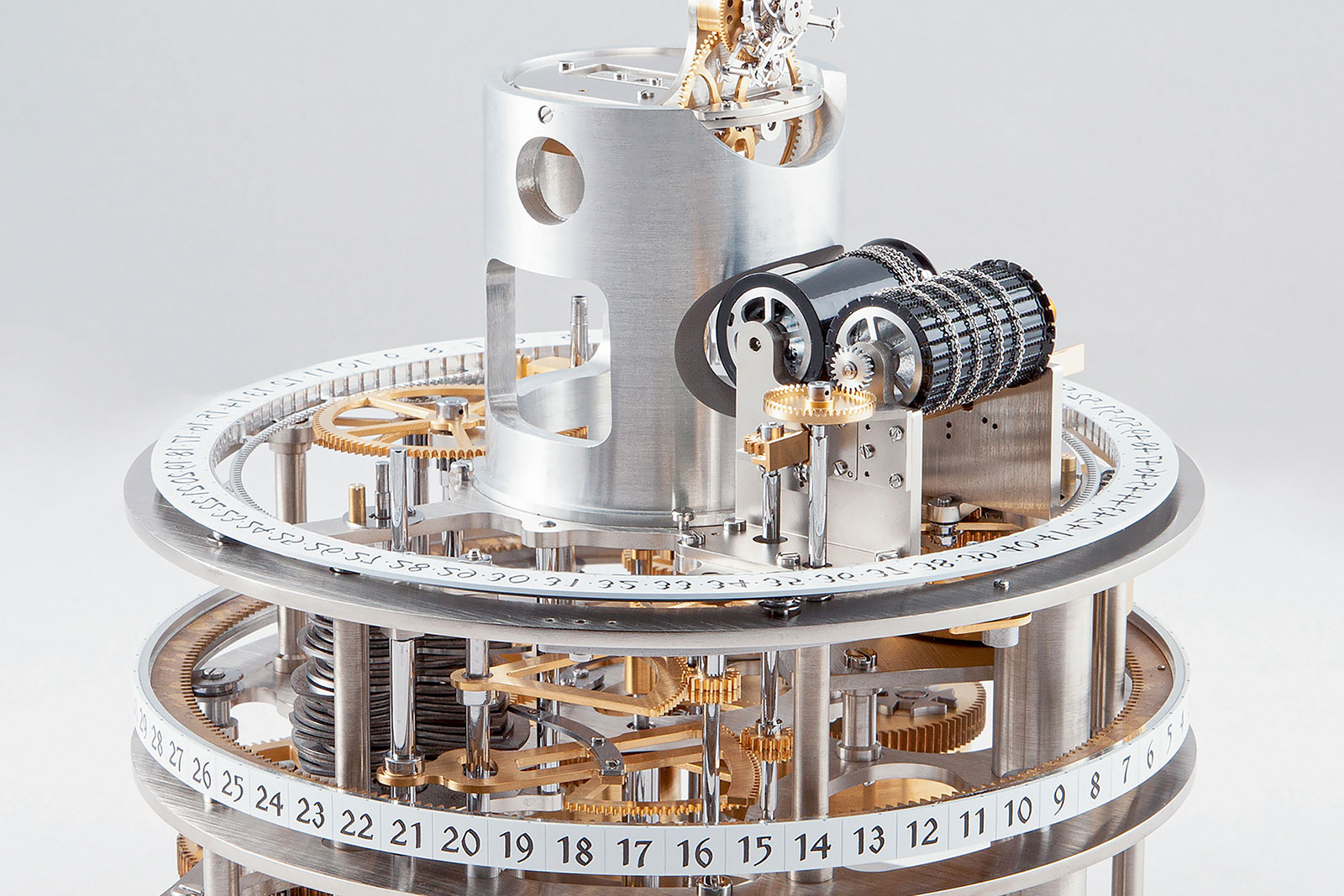
The stack of 24 cams is visible on the left, with a pair of racks that transmit the mechanical information to its right
The hour display requires four separate barrels to function – one for timekeeping and three to power the hour display. Collectively, they provides a power reserve of eight days, which is indicated by a vertical power reserve indicator in the form of a bug climbing along the oak tree.
Minutes are indicated via a simple rotating disc visible visible in an aperture under the window for the hours. A simple date is also visible in circular window just below the helmeted figure representing the wizard Chernomor of the poem. And of course, a 60-second flying tourbillon is located above the hours and visible within a cutout on the tree trunk, serving to indicate the seconds.
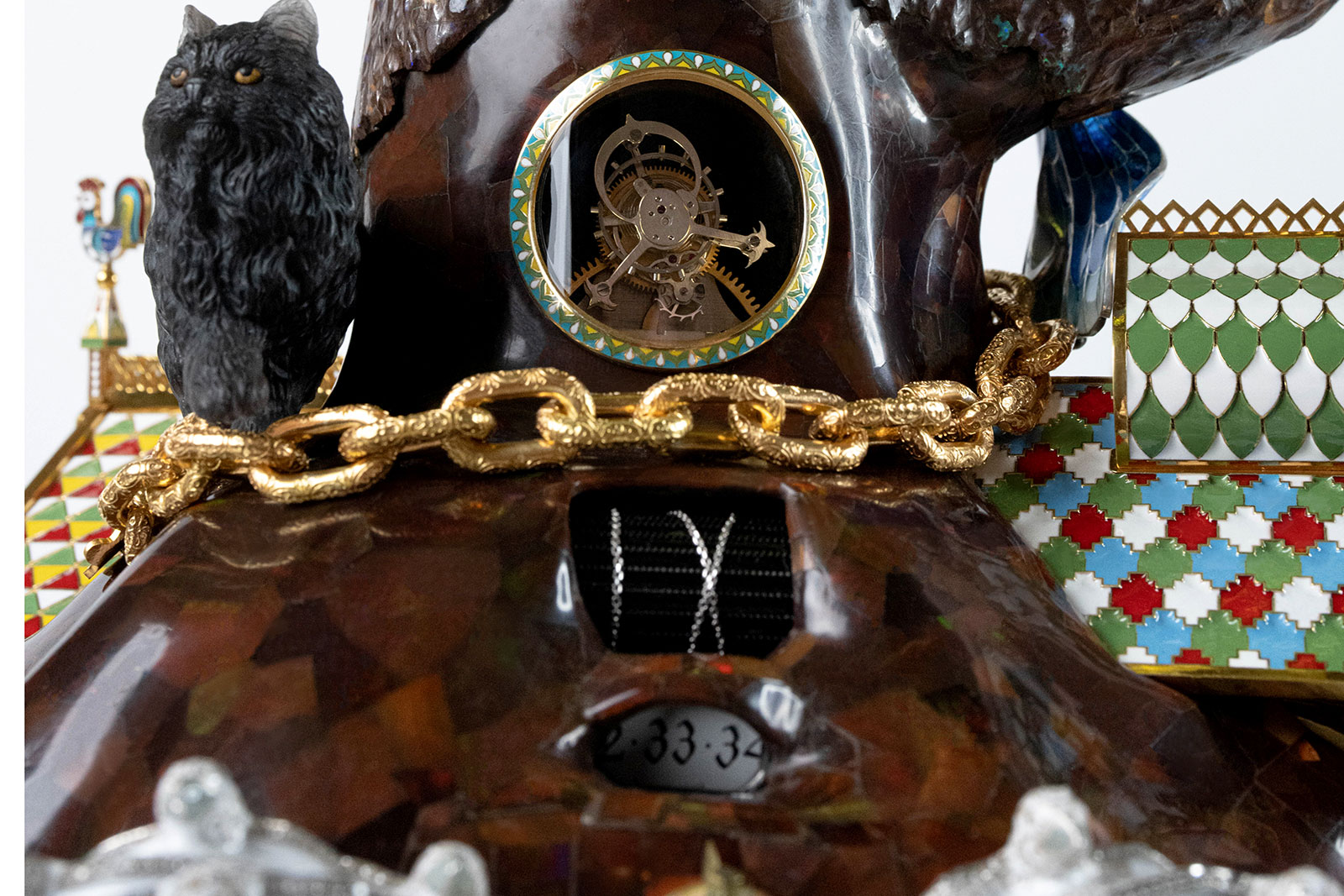
The hours displaying “IX” and minutes in between “33” and “34”
Key facts and price
Konstantin Chaykin Lucomorye Clock
Height: 47 cm
Diameter of base: 41 cm
Weight: 16.4 kg
Materials: Duralumin, silver, jade, opal from Australia, fire opal from Ethiopia, and enamelling
Movement: TLU.04-0
Functions: Hours indicated with chains on rotating drums, ring minute indicator, one-minute tourbillon, ring date display, and vertical power reserve indicator
Winding: Key wind
Power reserve: 8 days
Limited edition: Unique pieces created at a client’s request
Price: Unavailable
For more information, visit Chaykin.ru.
Back to top.








